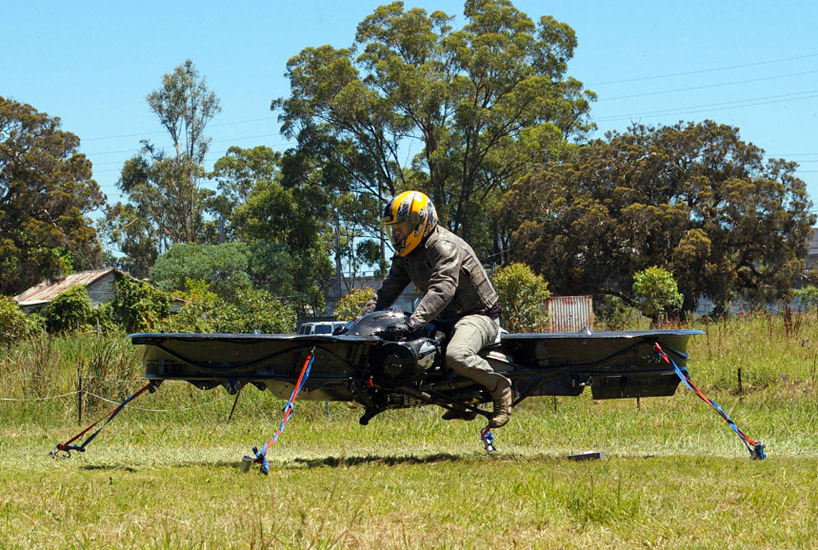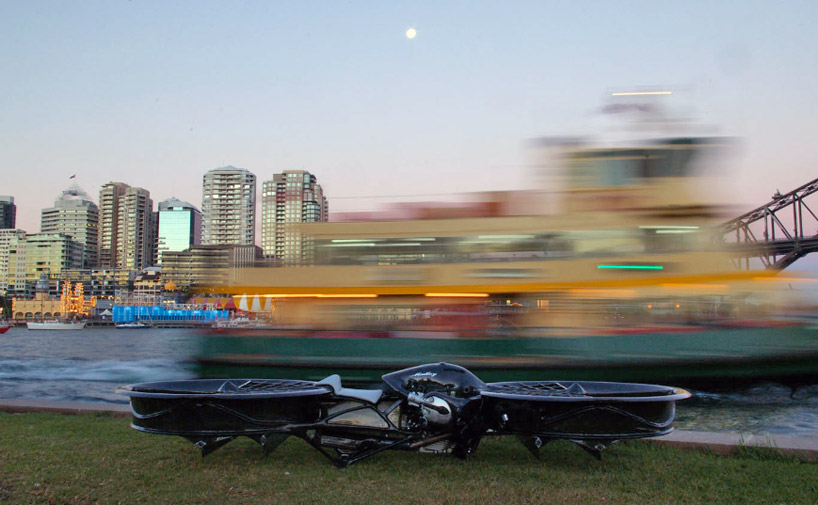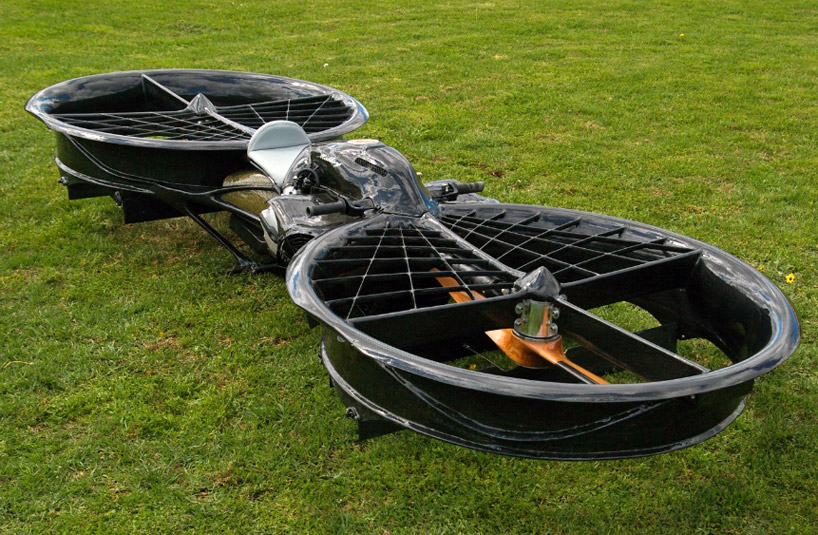
'hoverbike' prototype, invented by australian mechanical engineer chris malloy
working in his spare time, australian mechanical engineer chris malloy claims to have invented a working 'hoverbike',
operated like a motorcycle. measuring 9.8 long by 4.3 wide and 1.8 feet high (3 x 1.3 x 0.55m) the prototype bike
seats a single pilot between two oak and carbon fibre-blade two-blade propellers, currently exposed but which
for safety reasons will be covered in mesh in future models. in basic flight design, the bike is modeled after
tandem-rotor chinook helicopters, whereby the two rotors rotate in opposite directions, canceling one another's torque
and thus increasing stability and efficiency of the vehicle.
the 'hoverbike' is controlled completely by handlebars, via actions similar to those used for motorcycles. forward and reverse
movement is accomplished through two grips, one of which increases the thrust while the other adjusts the angle of the control vanes
positioned below the rotors, pitching the nose of the vehicle down for forward movement and up for backwards.

front view during tethered testing
malloy estimates that the 'hoverbike', whose 4-stroke engine drives 80kW of power to the propellers, generating 7500rpm,
is capable of reaching heights of over 10,000 feet and of traveling 150 knots (173mph, or 278km/h). the vehicle's 30L primary tank
can be supplemented with additional fuel storage but even on its own should offer a range of 92 miles (148km) when traveling
at 80 knots (92mph or 148km/h).
although the relatively low number of parts makes the craft simpler and more reliable than most helicopters,
safety concerns for the bike have led malloy to make most engine and operating features triply redundant.
two explosive parachutes can be attached to the vehicle's frame, although malloy recommends that the pilot
simply wear an emergency parachute so that he has the option of dislodging from the vehicle if necessary.

full profile view

3/4 top view

aerial view, placed next to a car for size reference
with tests already conducted of the prototype tethered to the ground, the first flight tests are planned for the coming months.
the 'hoverbike' is classified in the united states as an 'ultralite' vehicle, meaning that it would not require a pilot's license
to be operated. malloy hopes to begin limited production of the bike within a year, estimating the cost at about 40,000 USD
for a run of 100 units per year, and on par with performance motorcycles if demand rises to about 1000 units per year.
No comments:
Post a Comment